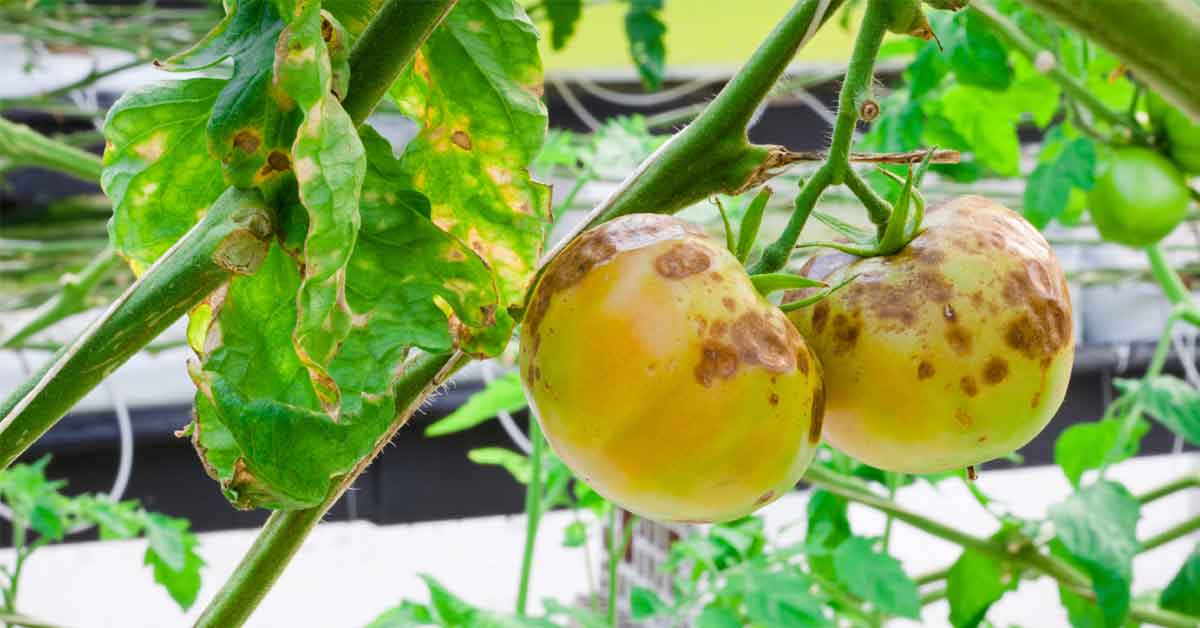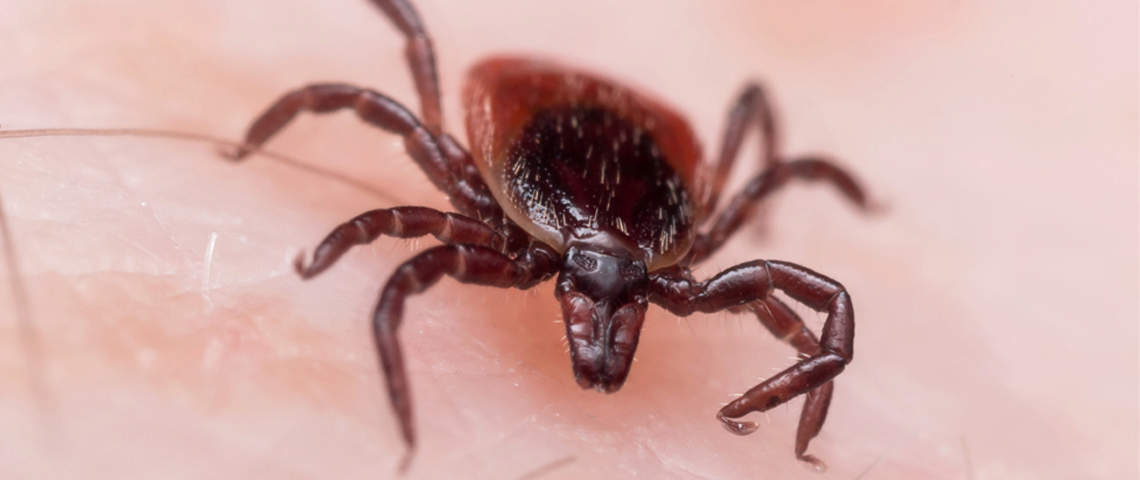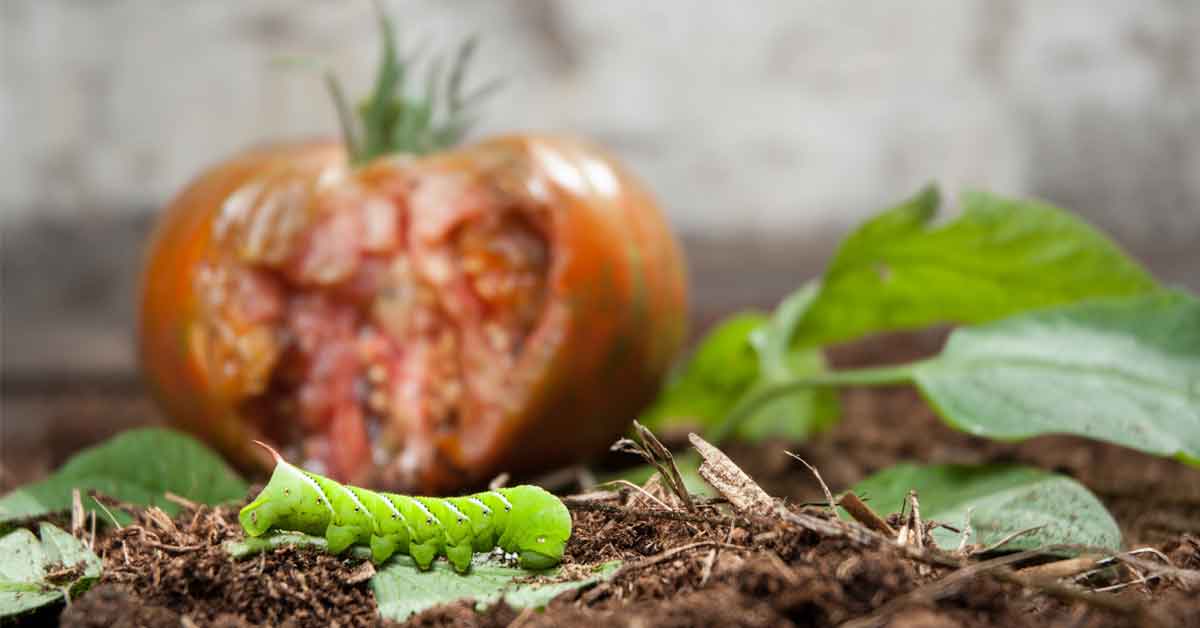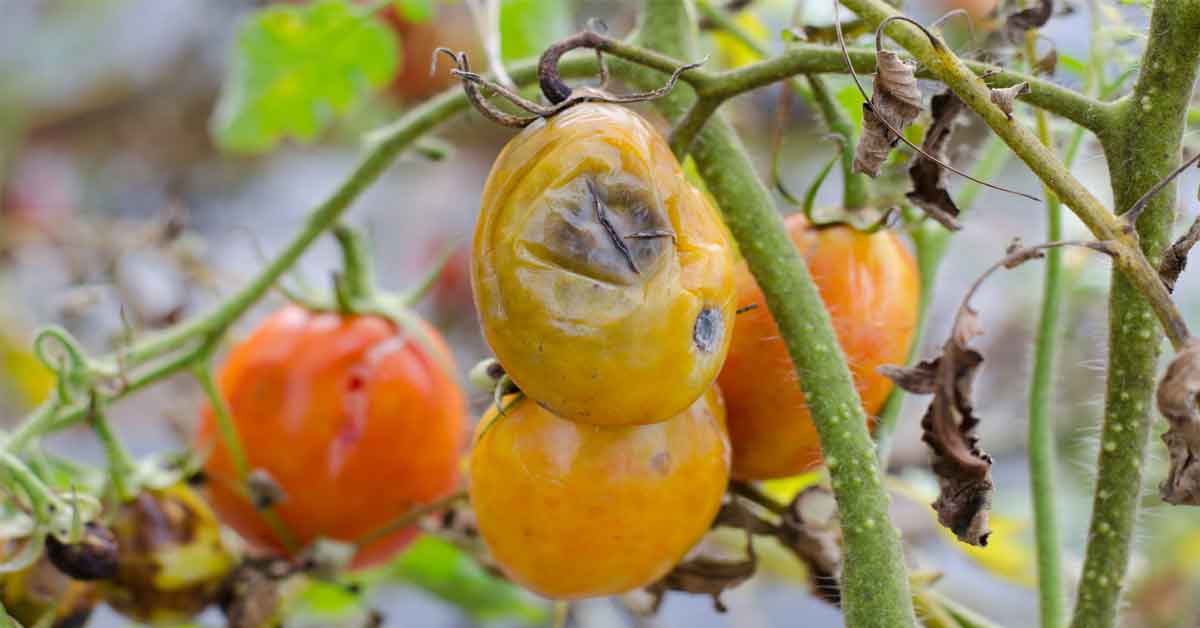How to Identify, Control and Prevent Blight on Your Tomatoes
Blight spreads by fungal spores that are carried by insects, wind, water and animals from infected plants, and then deposited on soil.1 The disease requires moisture to progress, so when dew or rain comes in contact with fungal spores in the soil, they reproduce. When it rains, water hits the ground, splashing soil and spores onto the lower leaves of plants, where the disease shows its earliest symptoms.
While there is no cure for blight on plants or in the soil, 2 there are some simple ways to control this disease.
Identifying Blight
When examining plants for blight, note symptoms carefully to positively identify the disease. While the treatment for all blight is the same, the symptoms are a little different.
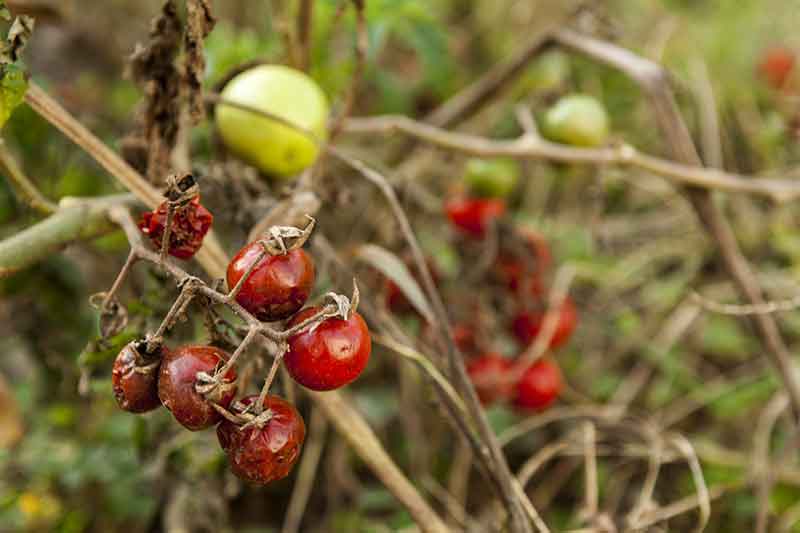
Types of Blight
Early Blight. Early blight symptoms usually begin after the first fruits appear on tomato plants, starting with a few small, brown lesions on the bottom leaves. As the lesions grow, they take the shape of target-like rings, with dry, dead plant tissue in the center. The surrounding plant tissue turns yellow, then brown before the leaves die and fall off the plant.2 While early blight does not directly affect fruits, the loss of protective foliage can cause damage to fruits due to direct sun exposure. That condition is known as sun scald.
Late Blight. Late blight can affect tomato plants at any point in the growing season and at any stage of growth. Symptoms appears at the edge of tomato leaves, with dark, damaged plant tissue that spreads through the leaves toward the stem. White mildew may grow on the lower leaf surface of the affected area. This type of blight progresses rapidly through plants in humid conditions,3 and if left untreated, can spread to fruits.
Septoria Leaf Spot. Like early blight, the first symptoms of septoria leaf spot often begin on the lowest leaves of plants after fruits appear. Rather than showing as a few lesions per leaf, septoria leaf spot appears as many tiny, brown spots on leaves. Lesions continue to grow and spread before causing leaves to fall off. This type of blight does not usually affect fruits.4
Early blight and septoria leaf spot spores survive the winter in the ground, causing the disease to return next year.1 Late blight does not overwinter in the soil because it requires live tissue to survive, but wind can carry spores up to 30 miles away from infected plants.3
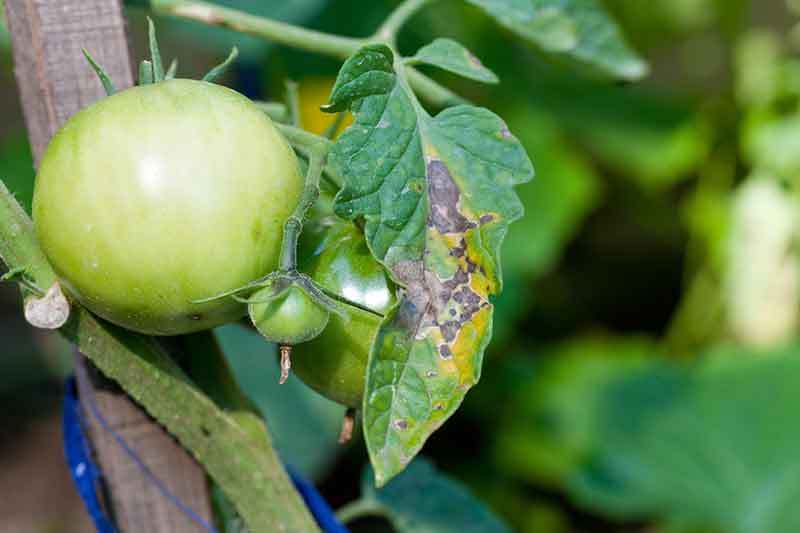
Treating Blight
Once blight is positively identified, act quickly to prevent it from spreading. Remove all affected leaves and burn them or place them in the garbage. Mulch around the base of the plant with straw, wood chips or other natural mulch to prevent fungal spores in the soil from splashing on the plant. If blight has already spread to more than just a few plant leaves, apply Daconil® Fungicide Ready-To-Use, which kills fungal spores and keeps blight from causing further damage.
Preventing Blight
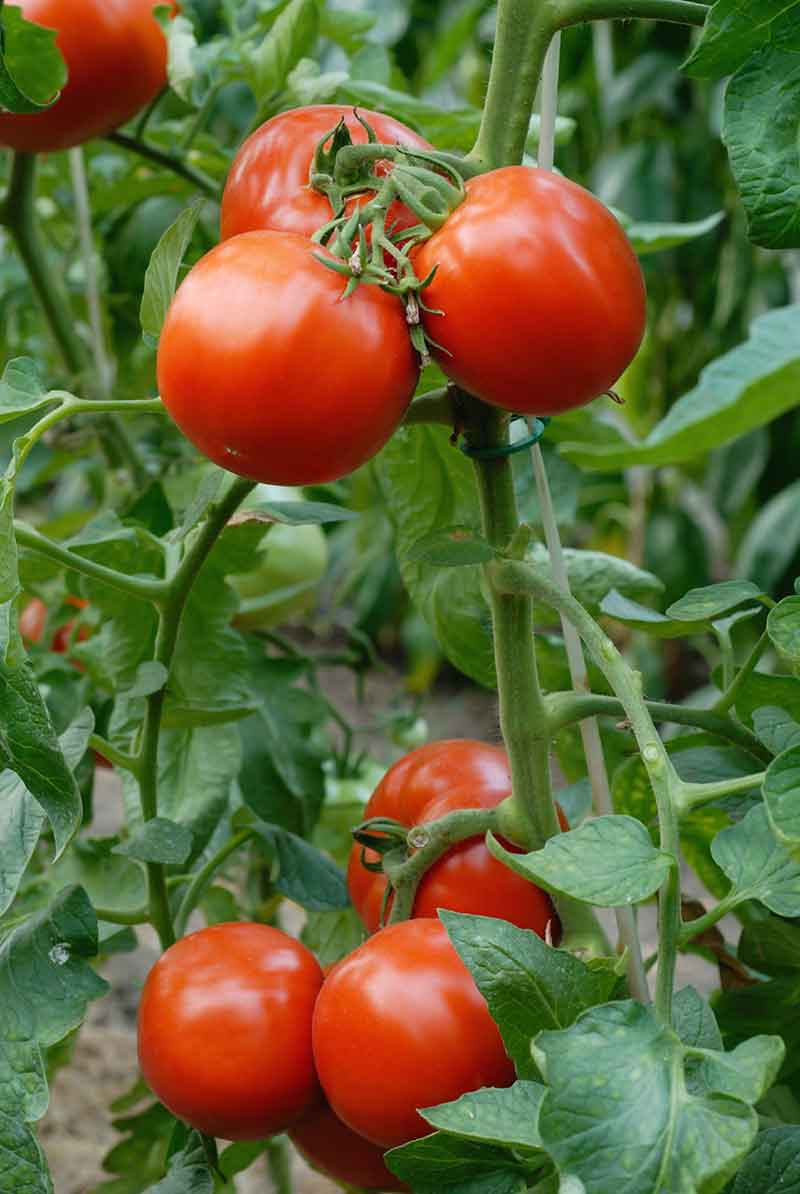
When planting tomatoes, make a plan to prevent blight. Incorporate these simple steps to keep your plants healthy.
- Practice crop rotation by planting tomatoes in a section of the garden that has not been used to grow tomatoes or any other member of the Solanaceae family, such as eggplant, potatoes or peppers, in the last two years.5
- Read seed packages or plant labels carefully to select a tomato variety that is resistant to blight.6
- Stake or cage tomato plants so that foliage grows vertically, off the ground.4
- Mulch well around plants.
- When watering, use a soaker hose rather than an overhead sprinkler. This will reduce the amount of water on leaves and keep spores in the soil from splashing on plants.
Inspect the plants in your garden every few days for signs of damage. Fast diagnosis and a quick response are the keys to a healthy, tasty harvest. To keep your tomatoes nourished, feed your garden with Pennington Rejuvenate Plant Food Tomato & Vegetables 4-5-4. it revitalizes your soil with essential nutrients and feed tomatoes for up to four months.
If insect pests trouble your tomatoes, turn to Sevin Insect Killer Ready To Use2. It kills more than 700 garden pests on contact, wihout harming plants or blooms.
With GardenTech and the Central Garden & Pet family of brands on your side, you overcome fungal disease and enjoy your tomato harvest.
Daconil is a regstered trademark of GB Biosciences Corp.
Related Articles in Edible Gardening:
- Easy Steps to Grow Your Own Tomatoes
- A Taste of Summer: Growing Cucumbers
- Keep Your Garden Free From Fungal Disease
References:
- "Fighting Tomato Blight," Massachusetts Master Gardener Association
- David Whiting,Carol O'Meara, Carl Wilson, "Tomato Early Blight," Colorado State Master Gardener Program, October 2014
- Margaret Tuttle McGrath Ph.D., "Late Blight Management in Tomato With Resistant Varieties," Cooperative Extension System, November 2015
- "Septoria Leaf Spot of Tomato," Missouri Botanical Garden
- Ron Smith, Susie Thompson, Todd Weinmann, Julie Garden-Robinson, "All in the Family: Potatoes, Tomatoes, Peppers and Eggplant," North Dakota State University, March 2012
- "Early Blight on Tomato," Missouri Botanical Garden
Get Monthly Gardening Advice!

